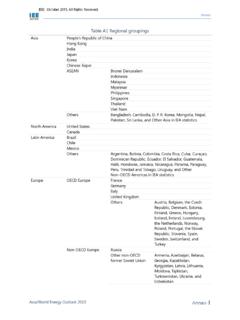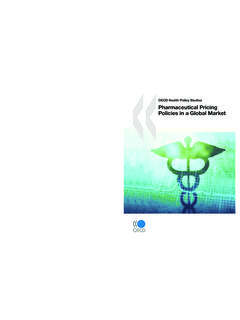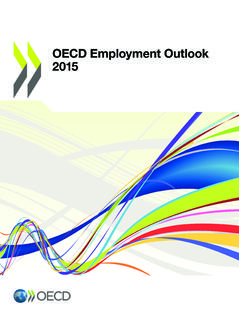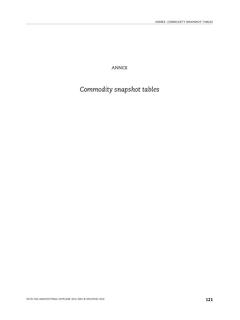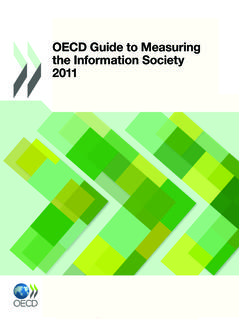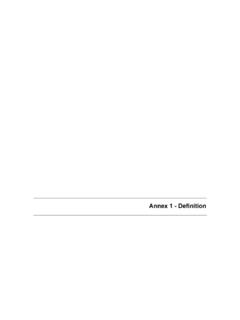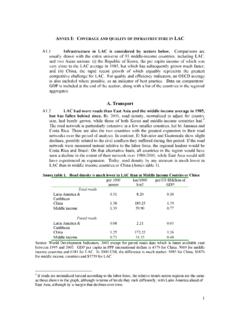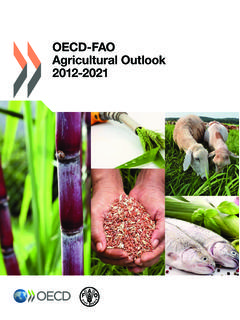Transcription of Annex A1 - OECD
1 STRONG PERFORMERS AND SUCCESSFUL REFORMERS IN EDUCATION LESSONS FROM PISA 2012 FOR THE UNITED STATES OECD 201395 Annex A1 THE PISA APPROACH TO ASSESSING STUDENT PERFORMANCE IN MATHEMATICSANNEX A1: THE PISA APPROACH TO ASSESSING STUDENT PERFORMANCE IN MATHEMATICS96 OECD 2013 STRONG PERFORMERS AND SUCCESSFUL REFORMERS IN EDUCATION LESSONS FROM PISA 2012 FOR THE UNITED STATESTHE PISA APPROACH TO ASSESSING STUDENT PERFORMANCE IN MATHEMATICSThe PISA definition of mathematical literacy The focus of the PISA 2012 assessment of mathematics was on measuring an individual s capacity to formulate, employ and interpret mathematics in a variety of contexts.
2 It includes reasoning mathematically and using mathematical concepts, procedures, facts, and tools to describe, explain and predict phenomena. It assists individuals in recognizing the role that mathematics plays in the world and to make the well-founded judgments and decisions needed by constructive, engaged and reflective citizens. The definition asserts the importance of mathematics for full participation in society and it stipulates that this importance arises from the way in which mathematics can be used to describe, explain and predict phenomena of many types.
3 The resulting insight into phenomena is the basis for informed decision making and judgments. Literacy in mathematics described in this way is not an attribute that an individual has or does not have; rather, it can be acquired to a greater or lesser extent, and it is required in varying degrees in society. PISA seeks to measure not just the extent to which students can reproduce mathematical content knowledge, but also how well they can extrapolate from what they know and apply their knowledge of mathematics, in both new and unfamiliar situations.
4 This is a reflection of modern societies and workplaces, which value success not by what people know, but by what people can do with what they focus on real-life contexts is also reflected in the reference to using tools that appears in the PISA 2012 definition of mathematical literacy. The word tools here refers to physical and digital equipment, software and calculation devices that have become ubiquitous in 21st century workplaces. Examples for this assessment include a ruler, a calculator, a spreadsheet, an online currency converter and specific mathematics software, such as dynamic geometry.
5 Using these tools require a degree of mathematical reasoning that the PISA assessment is well-equipped to measure. The PISA 2012 framework for assessing mathematics Figure presents an overview of the main constructs of the PISA 2012 mathematics framework that was established and agreed by the participating countries, and how the constructs relate to each other. The largest box shows that mathematical literacy is assessed in the context of a challenge or problem that arises in the real world. The middle box highlights the nature of mathematical thought and action that can be used to solve the problem.
6 The smallest box describes the processes that the problem solver uses to construct a solution. Challenge in real world contextMathematical content categories: Quantity; Uncertainty and data; Change and relationships; Space and shapeReal world context categories: Personal; Societal; Occupational; ScientificMathematical thought and actionMathematical concepts, knowledge and skillsFundamental mathematical capabilities: Communication; Representation; Devising strategies; Mathematization; Reasoning and argument; Using symbolic, formal and technical language and operations; Using mathematical toolsProcesses: Formulate; Employ.
7 Interpret/EvaluateFormulateInterpretEmpl oyEvaluateResultsin contextProblemin contextMathematicalproblemMathematicalre sults Figure Main features of the PISA 2012 mathematics frameworkTHE PISA APPROACH TO ASSESSING STUDENT PERFORMANCE IN MATHEMATICS: Annex A1 STRONG PERFORMERS AND SUCCESSFUL REFORMERS IN EDUCATION LESSONS FROM PISA 2012 FOR THE UNITED STATES OECD 201397 Context categoriesReal-world challenges or situations are categorized in two ways: their context and the domain of mathematics involved. The four context categories identify the broad areas of life in which the problems may arise: personal, which is related to individuals and families daily lives; societal, which is related to the community local, national or global in which an individual lives; occupational, which is related to the world of work; or scientific, which is related to the use of mathematics in science and technology.
8 According to the framework, these four categories are represented by equal numbers of items. Content categoriesAs seen in Figure , the PISA items also reflect four categories of mathematical content that are related to the problems posed. The four content categories are represented by approximately equal proportions of items. For the assessment of 15-year-olds, age-appropriate content was developed. The content category quantity incorporates the quantification of attributes of objects, relationships, situations, and entities in the world, which requires an understanding of various representations of those quantifications, and judging interpretations and arguments based on quantity.
9 It involves understanding measurements, counts, magnitudes, units, indicators, relative size, and numerical trends and patterns, and employing number sense, multiple representations of numbers, mental calculation, estimation, and assessment of reasonableness of results. The content category uncertainty and data covers two closely related sets of issues: how to identify and summarize the messages that are embedded in sets of data presented in different ways, and how to appreciate the likely impact of the variability that is inherent in many real processes.
10 Uncertainty is part of scientific predictions, poll results, weather forecasts and economic models; variation occurs in manufacturing processes, test scores and survey findings; and chance is part of many recreational activities that individuals enjoy. Probability and statistics, taught as part of mathematics, address these issues. The content category change and relationships focuses on the multitude of temporary and permanent relationships among objects and circumstances, where changes occur within systems of interrelated objects or in circumstances where the elements influence one another.










